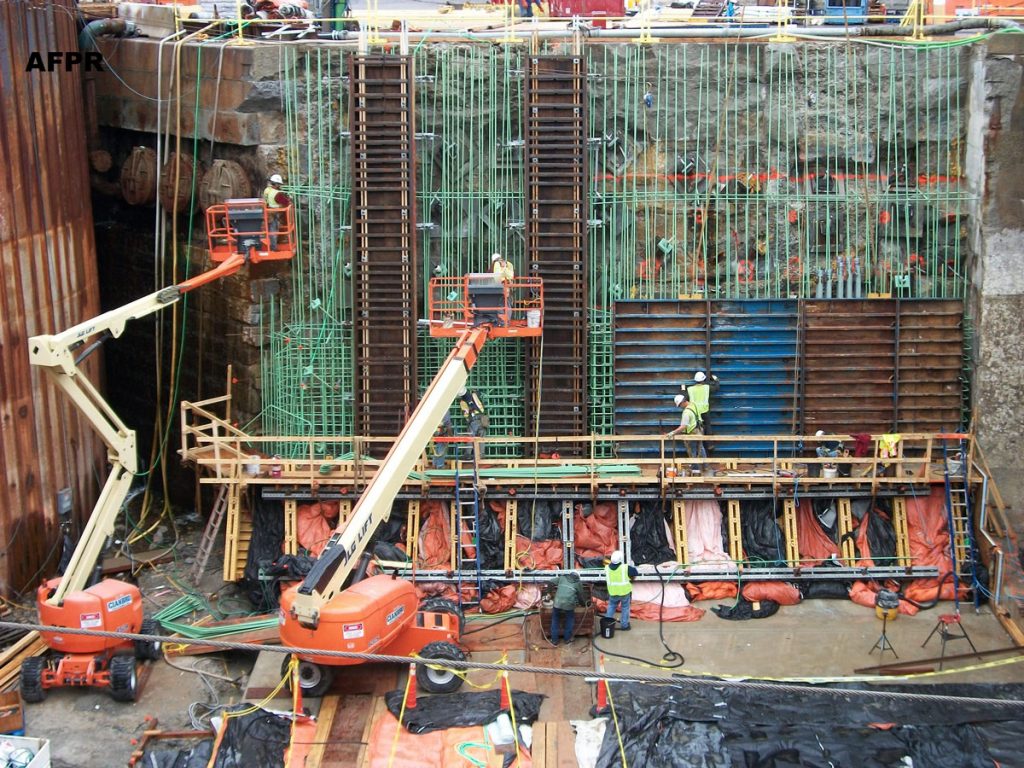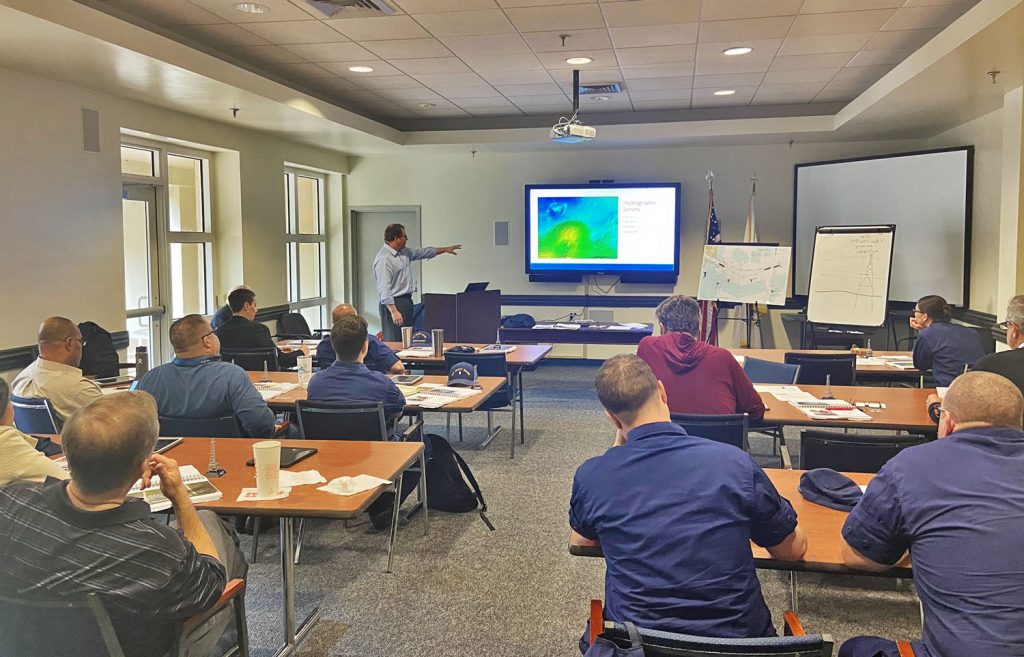What is an Engineer-Diver?
An engineer-diver is a professional with a 4-year engineering degree and formal training in commercial diving operations. They should hold licensure as either a Professional Engineer (PE) or be in the process of obtaining licensure as an Engineer-in-Training (EIT). Engineer-divers possess unique qualifications enabling them to conduct underwater inspections to identify and assess the conditions of marine and waterfront structures. These guidelines are recommended by the American Society of Civil Engineers Underwater Investigations: Standard Practice Manual as minimum requirements for such assessments.
TGME’s In-House Engineer-Dive Team.
At TGME, nearly all our engineering staff hold commercial diving certifications. Each dive team is overseen by a Principal of the firm, fostering mentorship and ensuring inspection excellence. Our engineer-divers possess unique expertise in analyzing load paths and failure modes for in-water structures.
TGME's approach to waterfront facility projects begins with our engineer-divers conducting field investigations, above or below water. The data collected is then used to develop recommendations, compile reports, and complete designs. This streamlined process ensures continuity of data within the same team, guaranteeing top-quality deliverables for our clients. With no intermediary involved, this approach maintains data integrity from underwater assessment to final client delivery.
TGME has honed the art and expertise of conducting inspections on waterfront facilities across the globe. Led by our Principals, our engineer-dive teams offer invaluable firsthand experience, minimizing uncertainties for maintenance programs. Our hands-on approach enables us to customize inspections to assess operational capabilities effectively and provide realistic budgets for repairs and upgrades.
Our in-house engineer-dive teams are adept at evaluating structural deterioration in the field and collaborating with clients to outline repair recommendations and design solutions before facility operations are affected. TGME performs various types of inspections, including routine above-water and underwater inspections, condition assessments, detailed design-level inspections, construction quality assurance inspections, due diligence inspections, post-event inspections, special inspections, drone inspections, load-bearing structures (LBS) inspections, tower climbing and inspection, cathodic protection surveys, and photo documentation in zero visibility.
As a testament to our expertise and leadership in the industry, TGME President Noah Elwood, along with Vice Presidents Kirk Riden and Matthew Teeden, spearheaded the development of the ASCE Manual of Practice for Waterfront Facilities Inspection and Assessment.
Engineering services extending beyond inspections play a crucial role in comprehensively assessing the structural capability and operational readiness of facilities. TGME has undertaken task orders to evaluate a diverse range of waterfront facilities, including dry docks, piers, bulkheads, tramways, offshore towers, and bridges. Our team has extensive experience in leading and overseeing specialty surveys, such as:
These specialized surveys provide a deeper understanding of load paths, hidden or buried conditions, and structural integrity, ensuring that facilities are thoroughly assessed and equipped for optimal performance and longevity.
For more than three decades, TGME has been at the forefront of developing meticulously crafted and practical designs for our clients globally. Whether it's the design of a first responder boathouse or an extensive shipyard improvement task order exceeding $100 million, our engineers are fully immersed in every phase of each project, from inception to construction, ensuring that we consistently surpass our clients' expectations.
Our extensive experience encompasses a wide spectrum of services, including initial asset valuation, planning proposals, and comprehensive design solutions for industrial clients, state and federal agencies, and other waterfront facility owners across the nation and around the world.

TGME is dedicated to advancing industry standards, with senior management playing integral roles in providing guidance to both the engineering and commercial diving communities. Principals Noah Elwood, Kirk Riden, and Robert Snover, along with Chief Structural Engineer John Gaythwaite, have contributed significantly to the field through authored industry publications and the establishment of government standards and best practices for waterfront engineering inspection and design.
For instance, Mr. Elwood and Mr. Riden took the lead as authors for the American Society of Civil Engineers (ASCE) Manual of Practice (MOP) for the inspection and assessment of waterfront facilities. Mr. Riden also spearheaded the revision of the US Navy's Navy Tactical Reference Publication NTRP 4-04.2.8 Conventional Underwater Construction and Repair Techniques (formerly P-990). Furthermore, Mr. Gaythwaite led the development of an ASCE MOP for the mooring of ships at fixed harbor facilities and authored the book "Design of Marine Facilities," now in its third edition.
Not only has TGME's senior leadership authored seminal works in waterfront engineering, but they have also imparted their knowledge and expertise through course instruction. As part of our commitment to our clients, our leadership team develops and delivers training and technical content, along with accompanying manuals. For instance, we recently conducted courses for US Coast Guard Civil Engineering Units titled "Fixed Aids to Navigation (ATON) Inspection, Assessment, and Design," and contributed inspection guidelines to the US Coast Guard ATON Manual.
These programs aim to provide comprehensive understanding of various ATON structures, material considerations, deterioration mechanisms, and design principles. If you're interested in enhancing the knowledge of your ownership team, please reach out to us. We are passionate about sharing our experience and contributing to industry-wide knowledge building.

Tab Group Marine Engineering (TGME) is a premier engineering consulting firm renowned for its expertise in waterfront infrastructure across both oceanic and inland waterway environments.
© 2024 | Tab Group Marine Engineering | All rights Reserved